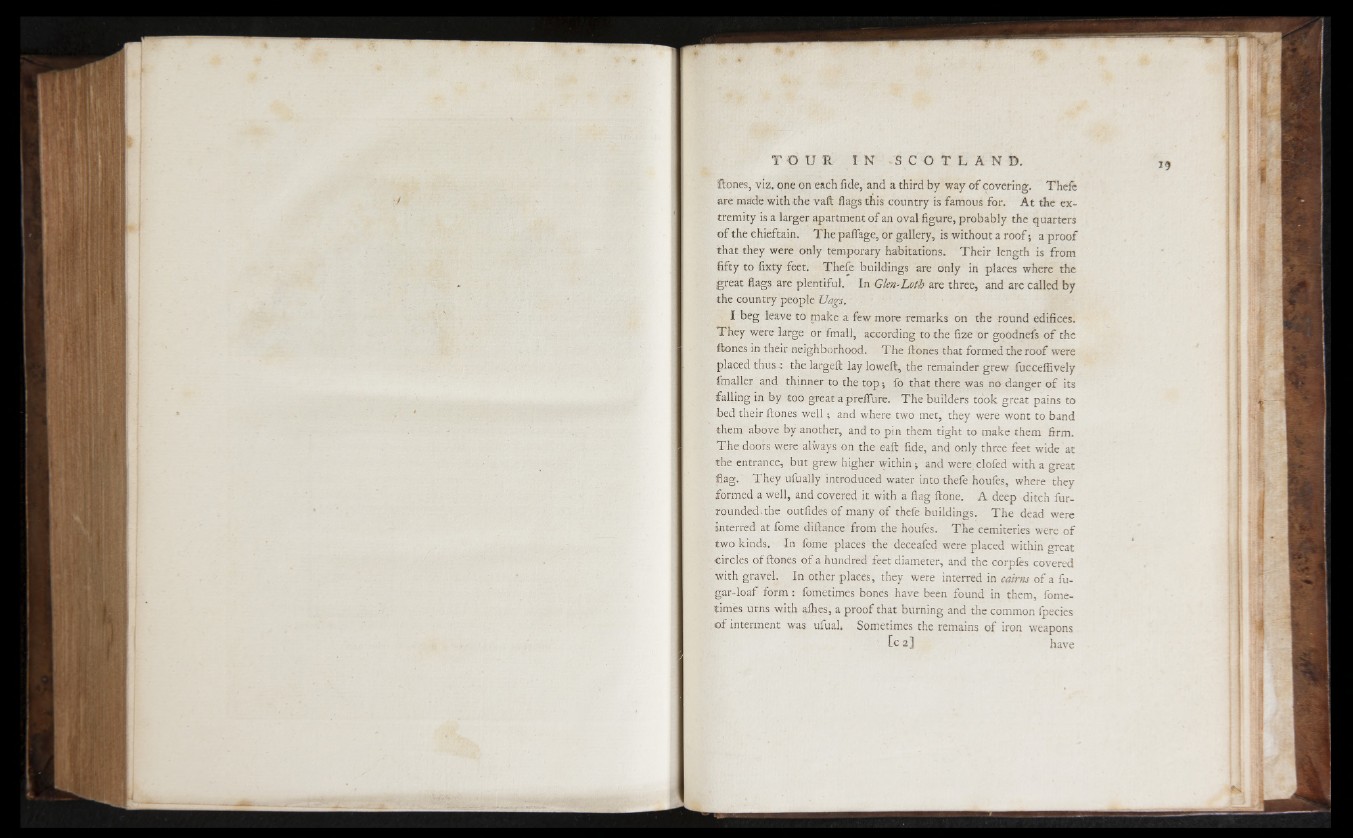
ftones, viz. one on each fide, and a third by way of covering. Theft
are made with the vaft flags this country is famous for. At the extremity
is a larger apartment of an oval figure, probably the quarters
of the chieftain. The pafíage, or gallery, is without a roof; a proof
that they were only temporary habitations. Their length is from
fifty to fixty feet. Thefe buildings are only in places where the
great flags are plentiful. In Glen-Loth are three, and are called by
the country people Uags.
I beg leave to make a few more remarks on the round edifices.
They were large or fmall, according to the fize or goodnefs of the
ftones in their neighborhood. The ftones that formed the roof were
placed thus the largeft lay loweft, the remainder grew fuccefiively
fmaller and thinner to the top; fo that there was no danger of its
falling in by too great apreflure. The builders took great pains to
bed their ftones well; and where two met, they were wont to band
them above by another, and to pin them tight to make them firm.
The doors were always on the eaft fide, and only three feet wide at
the entrance, but grew higher within ; and were clofed with a great
flag. They ufually introduced water into thefe houfes, where they
formed a well, and covered it with a flag ftone. A deep ditch fur-
rounded, the outfides of many of thefe buildings. The dead were
Interred at fome diftance from the houfes. The cemiteries were of
two kinds. In fome places the deceafed were placed within great
circles of ftones of a hundred feet diameter, and the corpfes covered
with gravel. In other places, they were interred in cairns of a fu-
gar-loaf form : fometimes bones have been found in them, fome-
times urns with alhes, a proof that burning and the common lpecies
of interment was ufuaL Sometimes the remains of iron weapons
' t c 2] have